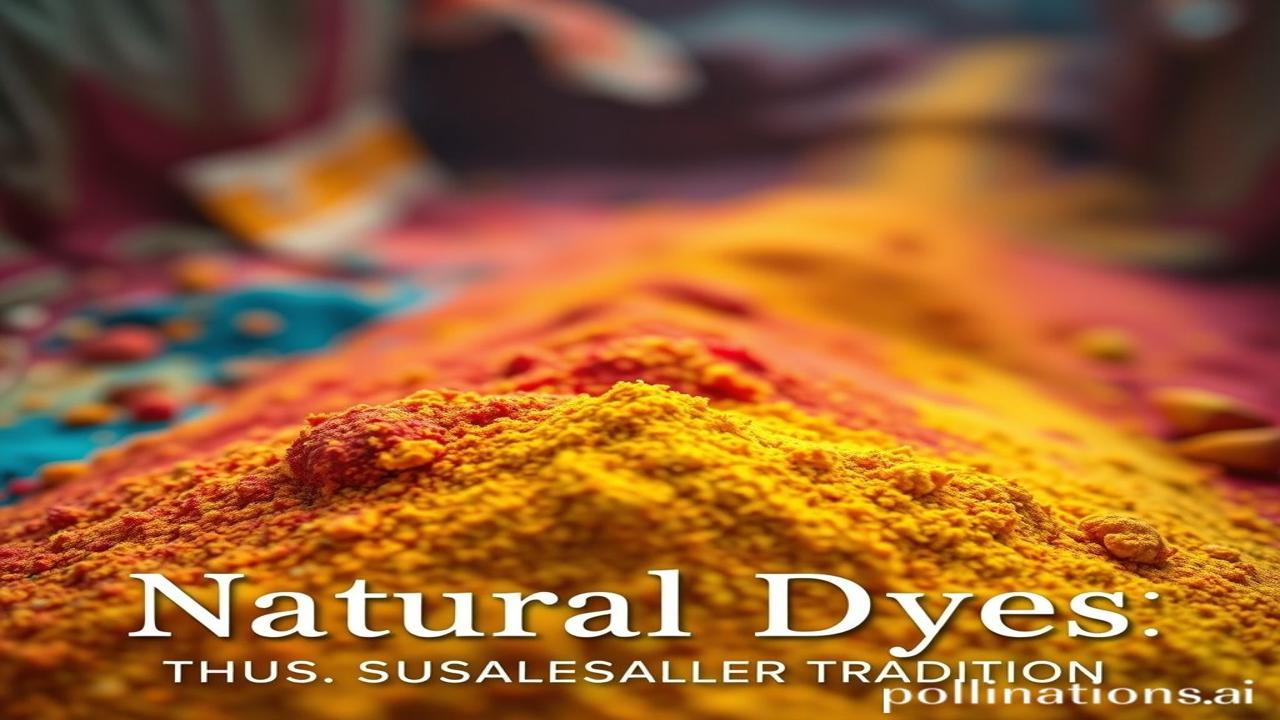Natural Dyes: India’s Sustainable Color Tradition
Kabhi socha hai, jab synthetic dyes nahi the, tab Bharat ke kapde kaise rangeen hua karte the? Imagine a world where vibrant hues sprung not from laboratories, but from the very earth beneath our feet – the flowers, leaves, roots, and minerals that painted our ancestors’ lives. Welcome to the world of natural dyes, a deeply rooted tradition that whispers tales of sustainability, artistry, and a profound connection with nature.
Historical & Cultural Context: Rangon Ka Itihas
What are natural dyes? Simply put, they are colorants derived from plant, animal, or mineral sources. India’s history with these dyes is as old as its civilization itself. We’re talking about the Indus Valley Civilization (around 3300-1300 BCE) where evidence suggests that cotton was dyed using indigo. Think about it – that’s over 5000 years ago!
Indigo (नील), madder (मजीठ), turmeric (हल्दी), and pomegranate (अनार) were some of the most widely used dyes. Each region had its own specialty, its own palette dictated by the local flora. For example, the vibrant reds of bandhani in Gujarat and Rajasthan relied heavily on madder and lac, while the deep blues of Kalamkari in Andhra Pradesh were synonymous with indigo.
Why is it important? Because natural dyes were not just about adding color; they were deeply intertwined with the cultural fabric of India. The process of dyeing was often a communal activity, a skill passed down through generations. The colors themselves held symbolic meaning, reflecting social status, religious beliefs, and regional identity. It was a sustainable system, a testament to the harmonious relationship between humans and nature.
ज़मीनी सच – लोग और जीवन: A Day in the Dyer’s Life
Picture this: Ma Shakuntala, her hands stained crimson from working with madder roots, meticulously stirring a large earthen pot over a wood fire. The air is thick with the earthy scent of simmering dyes and the rhythmic chants of her grandchildren playing nearby. Her daughter-in-law, Priya, carefully prepares the cotton fabric, treating it with mordants like alum (फिटकरी) to help the color bind permanently.
“Aaj rang thoda gehra hoga,” Ma Shakuntala muses, wiping sweat from her brow. “Surya ka tej aaj zyada hai. Iska asar rang par padega.” (Today the color will be a bit darker, the sun is strong today, it will affect the color).
For these artisans, dyeing was not just a profession; it was a way of life, a spiritual practice. They understood the delicate balance of nature and respected the power of their raw materials. Every step, from gathering the ingredients to the final rinse, was imbued with care and intention. Imagine the conversations, the stories, and the shared experiences that unfolded around those bubbling pots of color.
धरोहर और पहचान: Echoes of the Past Today
Today, in a world dominated by synthetic dyes, natural dyes are making a comeback. There’s a growing awareness of the environmental impact of chemical dyes and a renewed appreciation for the beauty and uniqueness of natural colors. We see echoes of this tradition in:
- Khadi and handloom industries: Many artisans are returning to natural dyes to create sustainable and ethically sourced textiles.
- Contemporary fashion: Designers are incorporating natural dyes into their collections, showcasing the rich and diverse palette that nature offers.
- Revival of traditional crafts: Kalamkari, bandhani, and other traditional crafts are experiencing a resurgence, thanks to the renewed interest in natural dyes.
This is Bharatiyata at its finest – a deep respect for our heritage, a commitment to sustainability, and an unwavering belief in the power of artistry. Natural dyes connect us to our roots, reminding us of a time when color was more than just a visual element; it was a reflection of our relationship with the world around us.
मजेदार तथ्य या भ्रम-भंजक: Myth-Busters & Fun Facts
Myth: Natural dyes are dull and lack vibrancy compared to synthetic dyes.
Truth: While some natural dyes may be more subtle, others, like indigo and madder, can produce incredibly vibrant and long-lasting colors. The key is in understanding the properties of each dye and using appropriate mordants and dyeing techniques.
Fun Fact: Did you know that the pigment Tyrian purple, derived from a species of sea snail, was once so valuable that it was reserved exclusively for royalty? This dye, used in ancient Rome, took thousands of snails to produce just a gram of color!
दृश्य और भावनाएं: A Sensory Journey
Imagine walking through a field of indigo plants, their deep green leaves shimmering in the sunlight. The air is filled with the sweet fragrance of turmeric flowers, and the soft murmur of artisans gossiping as they prepare their dyes. Feel the rough texture of the hand-spun cotton fabric, dyed with natural colors that seem to glow with an inner light. Hear the rhythmic clanging of the dyer’s tools and the gentle lapping of water as the dyed fabrics are rinsed in the river.
अंतिम विचार या उद्धरण: A Timeless Connection
The tradition of natural dyes is a reminder that true beauty lies not in artificiality, but in the harmony between humans and nature. It’s a testament to the enduring power of art, culture, and sustainability. As we look to the future, let us embrace the wisdom of our ancestors and rediscover the magic of natural colors.
“Vasudhaiva Kutumbakam” – The world is one family. Let our dyes be a reflection of this unity, drawn from the earth and imbued with the spirit of harmony.
